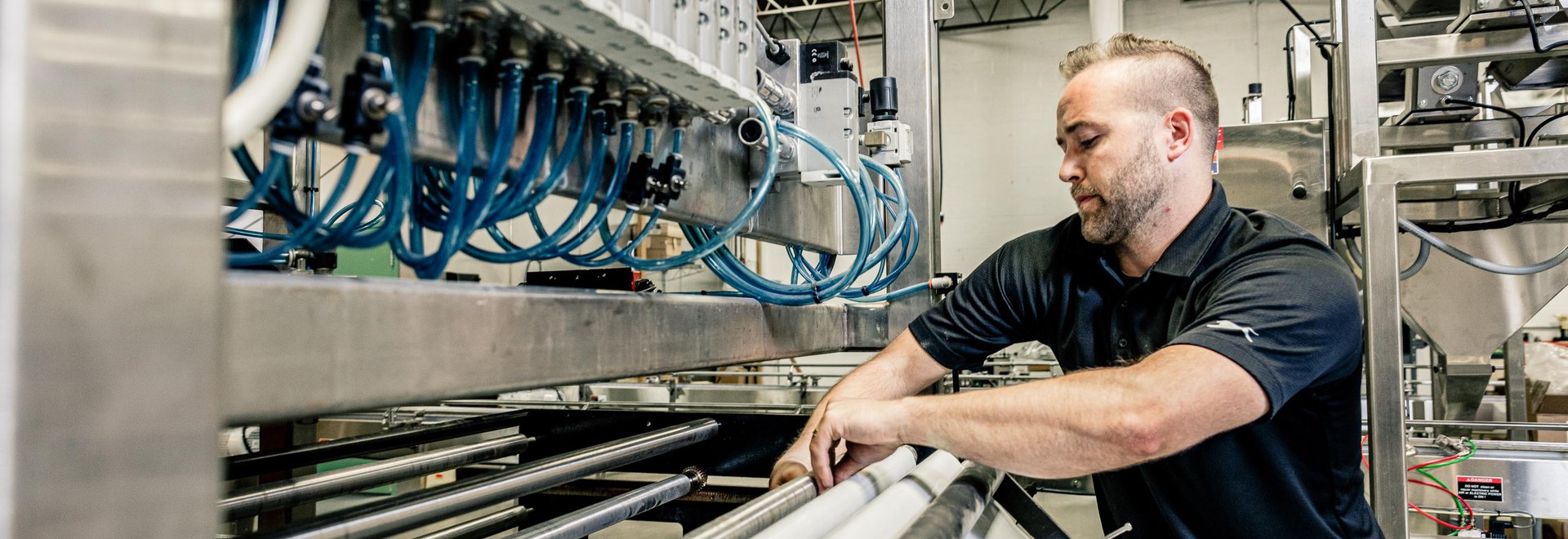
Blog
IT’S ALL IN THE REJECT DEVICE
March 15th, 2016
Other than the weigh scale, the second most important aspect of an Alpha Checkweigher is its reject mechanism. This device is responsible for insuring all unacceptable packages will be removed from a production line. After a product is weighed in motion across our checkweigher, and the package does not meet the customers preferred target weight, we provide a wide array of solutions to ensure the end user does not receive less than what they paid for. With over 15 different pneumatic reject devices customized to meet the specifications of the customer’s application, we offer the quickest and safest way to remove an “out of spec” package off of a production line. Some customers prefer to only reject underweight packages, as it is always better to give away a little bit of extra product from the end user’s stand point as opposed to shorting them product they spent their hard earned money on. This keeps the patron happy and the manufacturer out of trouble. Oppositely, some manufacturers may choose to remove both under and overweight packages off of the line so they can reuse the product, saving them countless dollars over the long run. We offer a toggle menu to allow the customer to make this decision. No matter the preference, Alpha provides a reliable and effective solution to ensure the manufacturer, co-packer if applicable, or customer is not disappointed.
Choosing the proper reject mechanism depends on a few variables. These variables consist of: the type of container or package, the weight of that container or package, and the speed at which the product is running across the checkweigher. To protect the product and prevent messes, these reject devices usually reject containers into/onto a reject tray, reject bin, or separate reject conveyor. To determine which type of reject will be most applicable to a given project, we will delve into which of the variables we mentioned match with which type of reject device we offer.
An air jet reject device.
For products weighing less than 1 lb, an air jet reject is the most common solution, shown on the left. An Air Jet will produce a sharp stream of air directed at the container to blow it off of the line. One of the many benefits of an air jet reject is its simplicity, there are no added moving parts required. Additionally, air jets are well suited for a fast production line, up to 250 packages per minute. The retraction time one would have from a reject where an arm has to extend to push the package of the line is non-existent with an air jet.
For packages that have to run equally as fast but way a bit more than 1 lb, we offer a bopper reject. Built with a cylindrical shape, boppers quickly hit or “bop” a container off the conveyor. Boppers are good for products weighing under 2.5 lbs, and like an air jet reject, can also handle speeds up to 250 cpm.
A pusher reject device.
Similar to a bopper but with heavier duty capabilities is a pusher reject. Pushers use a pneumatic cylinder with a plate on the end to literally push a product off the conveyor. These rejects can push products weighing up to 8 lbs off the conveyor at speeds up to 80 cpm. This is the second most widely used reject device behind the air jet.
Another option for rejecting over or under weight containers is a swing gate, or diverter. This reject allows products that meet the weight specification to pass through the out feed conveyor of the checkweigher and onto the next station. If a product does not meet the weight specification it will divert it off the line, think of a gate toggling back and forth in order to separate good and bad product left or right. Some diverters or swing gates can handle products up to 5 lbs at speeds of 200 cpm. The diverter is ideal for products like an uncapped shampoo bottle, or uncapped steak sauce bottle as it allows the product to be removed from the line but remain standing up and eliminating spills.
The last type of reject we will spotlight is a drop belt. A drop belt conveyor will lower the out feed conveyor so that the off target package will go onto the floor or into a reject bin below the checkweigher. These are a nice option because they do not add any more space onto the footprint of the machine like a reject tray or reject bin may do. Drop belts typically handle products that weigh less than 6 lbs and no larger than 12” Wide by 20” long. This device can reject containers at speeds up to 100 packages/minute.
For our middle to heavy weight checkweighers (MW-16 and HW-15) the most applicable rejects are; over-head sweeper rejects, pushers, swing gates, alarm horns, and stop belt rejects. Keep in mind; these rejects have the ability to handle heavier packages than what was mentioned in this blog. None the less, all rejects play a large role in the overall makeup of this “quality control” machinery. If you have any questions regarding which reject will best suit a specific application, please feel free to call at 877-GO-ALPHA or email our Alpha Checkweigher sales team!
